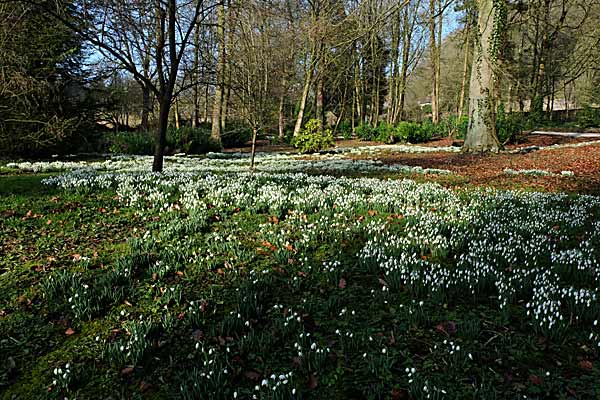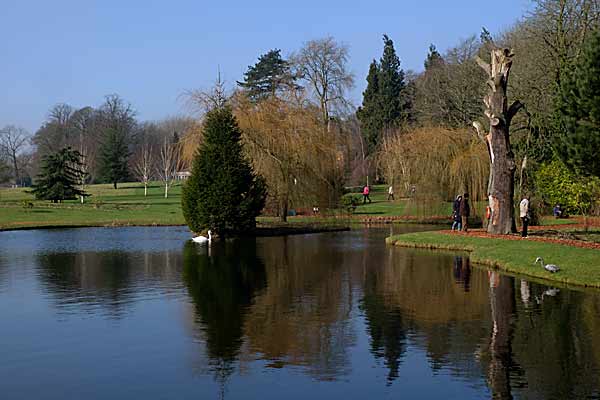Carsington is a quiet village which lies between
the market towns of Wirksworth and Ashbourne in the Derbyshire Peak District, close to Carsington Water. Hopton Hall and afew dwellings lie to the north of the village. In the 7th century, one
of the Northern saints, a monk named Betti, came down from Northum-
berland and set up a preaching cross, which now stands on the village
green. The cross previously stood in the grounds of Hopton Hall.
The Carsington church of St Margaret is of 12th century origin but was rebuilt in
1648 in Gothic style and stands on the bottom slopes of Carsington Pastures. An entry
in the register dated 29th September 1668 reads: 'Sarah Tissington died.
Born without hands or arms. She learned to knit, dig in the garden and
do other things with her feet.
Carsington Pastures is about 365 acres of open grazing land which
rises steeply above the village to a height of over 1,000 ft above sea level.
On the summit there is a large stone landmark, marked on the Ordnance
Survey as the King's Chair, but known locally as the Lady Chair. The
ground is scarred with remains of lead mines, the main source of wealth
for the village for several hundred years and worked first by the Romans. A Roman pig of lead was found on the Owslow farm some
years ago. Several of the old cottages in the village would have been
originally the coes which were built round a mine shaft and at least one
of them still has the mine shaft below the kitchen floor. A thick seam ot
lead was exposed during grave digging operations by the sexton in the
1930s, but could not be worked as the lead mining laws did not allow the
mining of lead in churchyards, orchards or gardens.
For many years no building of any kind took place, but during the late
20th century, a bypass was built as well as the new Carsington reservoir for the Severn Trent Water Authority. This has
brought alterations to the villages with new houses being built and barns
belonging to the farms along the valley being turned into desirable
residences. There are only two farms left now in Hopton and the last
farm in Carsington village was sold in 1990.

Snowdrops ar Hopton Hall

Gardens at Hopton Hall
The Gell family lived at Hopton Hall for several centuries until it was
sold in 1989 and their influence can be seen throughout both villages.
The Hall has been rebuilt and altered over the centuries but there is a part
of the original Elizabethan hall still standing with the red brick addition
of later years surrounding it. The main road originally ran beside the
school and across the front of the Hall until the later road was built. That
is the reason for the Miners Arms inn, a
large three-storey building of the 16th century, stands with its back to the main
road, facing the little lane which was the old road. The school, which is still used, dates back to 1726 when it was erected by Temperance Gell.
The Hall gardens are enclosed by a high red brick wall, which is
hollow with a stove at one end. The hollow wall conducted heat from the
fire round the wall, against which were grown various kinds of fruit trees
This warmth, together with its south-facing position, ensured an early
crop of peaches and other fruits for the house. This was built by Sir Philip
Gell, who founded the almshouses for the poor of Hopton and Carsington in 1722. The road to
Cromford known as the Via Gellia, or Gell's road. was also built at this
time to convey the world famous Hopton Wood stone, which was being
quarried on his land at Hopton, to the newly opened Cromford Canal
from where it was despatched worldwide.
Holiday Accommodation around Carsington and Hopton
Accommodation in the area can be found at
Accommodation in Derbyshire and the Peak District and
Also see Carsington Water for information on the reservoir.